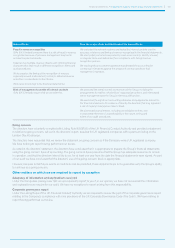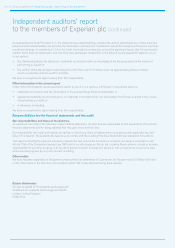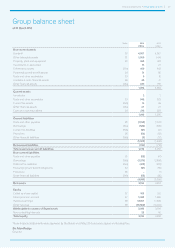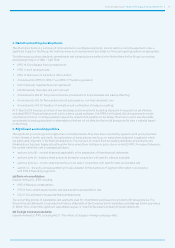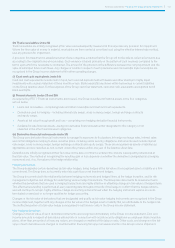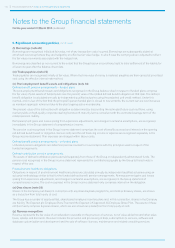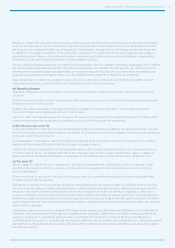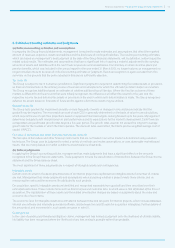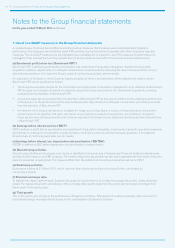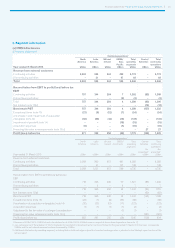Experian 2014 Annual Report Download - page 115
Download and view the complete annual report
Please find page 115 of the 2014 Experian annual report below. You can navigate through the pages in the report by either clicking on the pages listed below, or by using the keyword search tool below to find specific information within the annual report.
Financial statements • Notes to the Group financial statements 111
4. Recent accounting developments
The information below is a summary of other external accounting developments, none of which is currently expected to have a
significant impact on the Group. We routinely review such developments and adapt our financial reporting systems as appropriate.
The following accounting standards, amendments and interpretations are effective for the first time for the Group’s accounting
periods beginning on or after 1 April 2014:
• IFRS 10 ‘Consolidated financial statements’;
• IFRS 11 ‘Joint arrangements’;
• IFRS 12 ‘Disclosure of interests in other entities’;
• Amendments to IFRS 10, IFRS 11 and IFRS 12 ‘Transition guidance’;
• IAS 27 (revised) ‘Separate financial statements’;
• IAS 28 (revised) ‘Associate and joint ventures’;
• Amendment to IAS 32 ‘Financial instruments amendment on financial assets and liability offsetting’;
• Amendment to IAS 36 ‘Recoverable amount disclosures for non-financial assets’; and
• Amendment to IAS 39 ‘Novation of derivatives and continuation of hedge accounting’.
At 31 March 2014 there are a number of new standards and amendments to existing standards in issue but not yet effective,
including IFRS 9 ‘Financial instruments’ which is being issued in phases. Until IFRS 9 is finalised, its full requirements remain
uncertain and it is not currently possible to assess the impact of its adoption on the Group. There are no other new standards,
amendments to existing standards or interpretations that are not yet effective that would be expected to have a material impact
on the Group.
5. Significant accounting policies
The significant accounting policies applied are summarised below. They have been consistently applied to both years presented.
In the interests of brevity and clarity, the explanations of these policies now focus on areas where judgment is applied or which
are particularly important in the financial statements. The inclusion of content from accounting standards, amendments and
interpretations has been largely discontinued for items where there is simply no policy choice under EU-IFRS. For ease of reference,
the content within this note is arranged as follows:
• sections (a) to (d) – content of general applicability in the preparation of these financial statements;
• sections (e) to (o) – balance sheet policies to be read in conjunction with specific notes as indicated;
• sections (p) to (w) – income statement policies to be read in conjunction with specific notes as indicated; and
• section (x) – the policy and presentation principles adopted for the disclosure of segment information in accordance
with IFRS 8 ‘Operating segments’.
(a) Basis of consolidation
Experian follows EU-IFRS including:
• IFRS 3 ‘Business combinations’;
• IFRS 5 ‘Non-current assets held for sale and discontinued operations’; and
• IAS 27 ‘Consolidated and separate financial statements’.
The accounting policies of subsidiaries and segments used for consolidation purposes are consistent with Group policies. The
Group financial statements incorporate the financial statements of the Company and its subsidiary undertakings for the year ended
31 March 2014. A list of the significant subsidiaries is given in note O to the parent company financial statements.
(b) Foreign currency translation
Experian follows EU-IFRS, including IAS 21 ‘The effects of changes in foreign exchange rates’.




